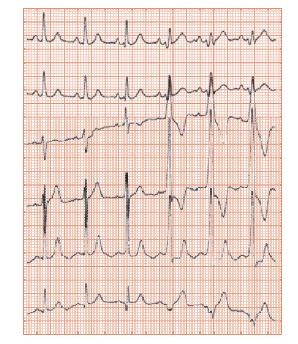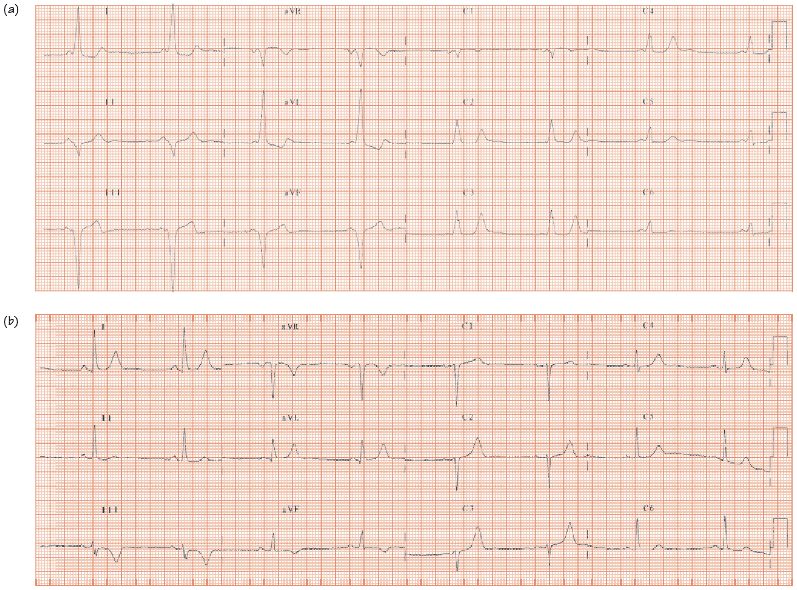Fig. 46.2 Adenosine revealing Wolff–Parkinson–White (WPW). Suspected WPW syndrome, but non-diagnostic ECG. Intravenous adenosine given, which blocks all conduction down the atrioventricular (AV) node for 2–6 s – if there is no accessory pathway, complete heart block occurs (i.e. P waves with no following QRS complexes). In WPW syndrome, all conduction to the ventricle passes down the accessory pathway, resulting in a very broad slurred QRS complex. Here the moment of transition is shown between ventricular activation via the normal AV node and the accessory pathway. The QRS complexes become broad, slurred and (best seen in leads V2/4, second and third from the bottom) show a very short PR interval.

Fig. 46.3 ECGs pre- and post-accessory pathway ablation. (a) A large delta wave, which implies that a lot of the ventricular myocardium is activated via the accessory pathway. PR interval very short, QRS upstroke slurred. ‘Pseudo-infarction’ pattern in the inferior leads (i.e. Q waves in leads II, III aVF). This patient has not had an inferior wall infarct; the Q waves reflect the very abnormal ventricular activation from the accessory pathway (a right posterior-septal pathway – see Chapter 12). (b) ECG after accessory pathway ablation. The ECG is virtually normal, except for the deep T wave inversion in lead III. Good sized inferior lead R waves, confirming the absence of inferior infarction. T wave inversion (‘T wave memory’) is common following catheter ablation (though does not occur with pathways which conduct only retrogradely), and usually resolves over time. Here, the inferior lead T wave inversion remained present many years later, for unknown reasons.

Stay updated, free articles. Join our Telegram channel

Full access? Get Clinical Tree


